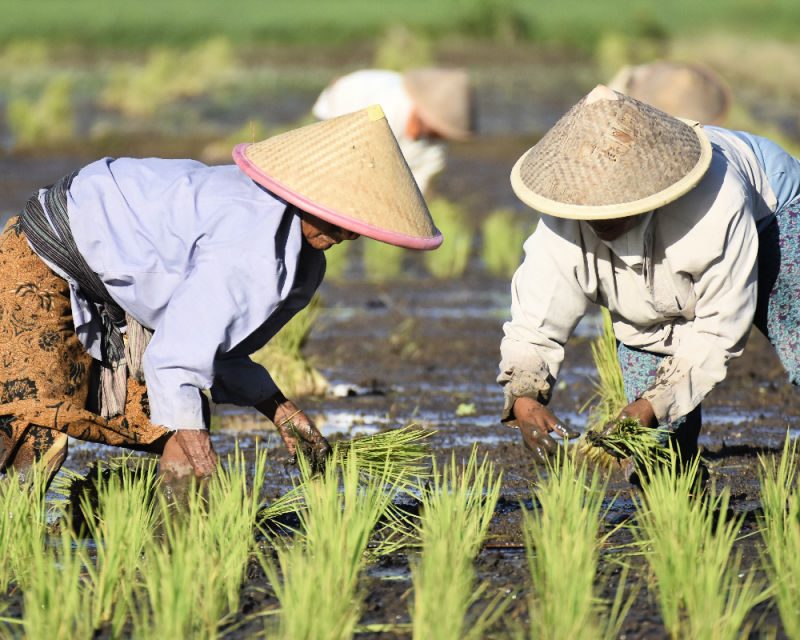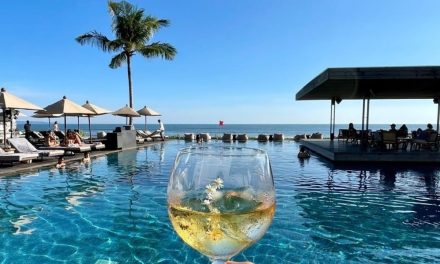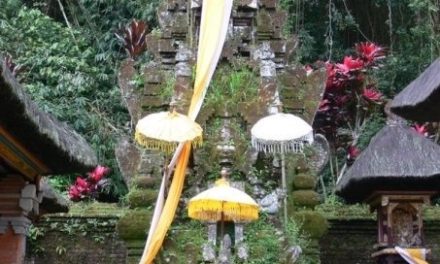Food is life in Bali! Every aspect of the day is low-key oriented around the next meal, whether you’re a local or a tourist.
For visitors exploring Bali for the first time, it’s essential to know a little about where your food is coming from.
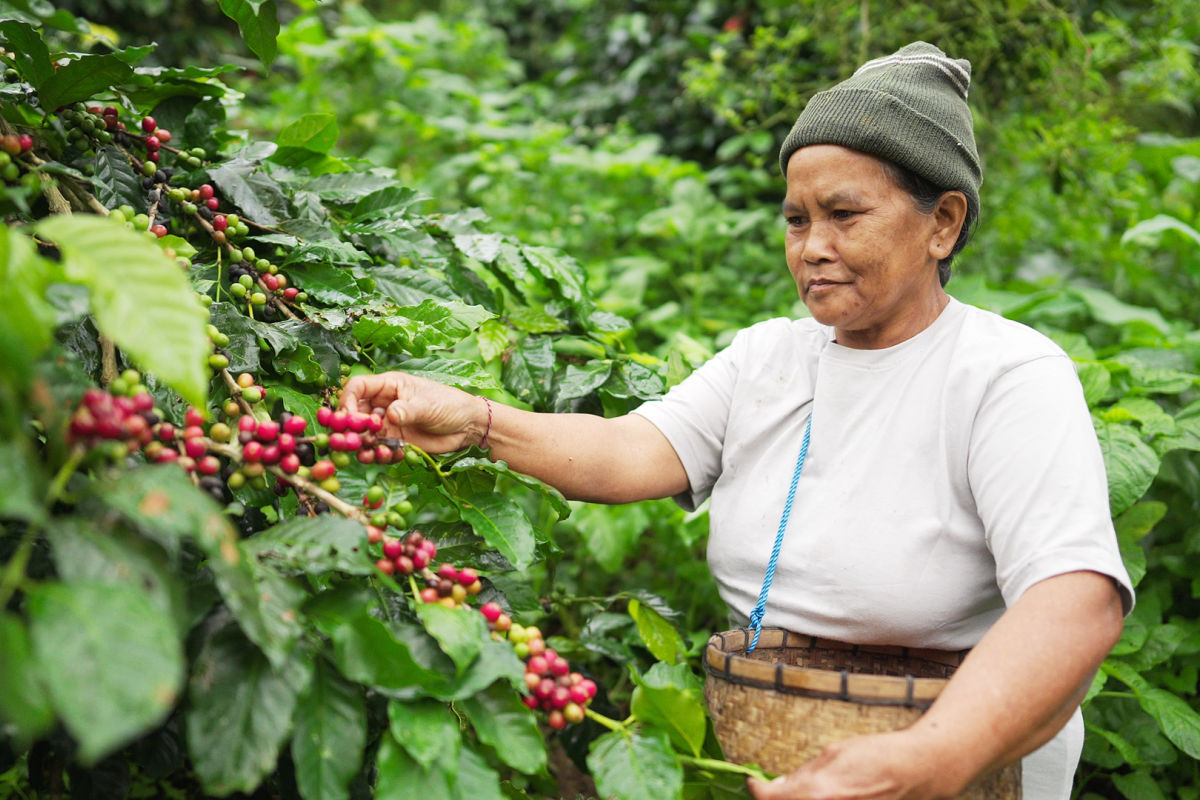
For centuries, Bali has been an island of abundance. From the vast green rice terrace of Jatiluwih to the cool volcanic slopes of Kintamani, Bali’s rich and fertile soils make it the perfect place to grow everything from coffee to rice, oranges to cassava.
Tourists visiting Bali are encouraged to connect with the island in meaningful ways. While there is certainly a time and a place to kick back and relax on a sun lounger, for committed travellers, there is so much to explore in Bali away from the beachfronts. Balinese farming culture is unique and offers tourists the chance to slow down, connect to natural cycles and even learn from the island’s elders about how to steward land.
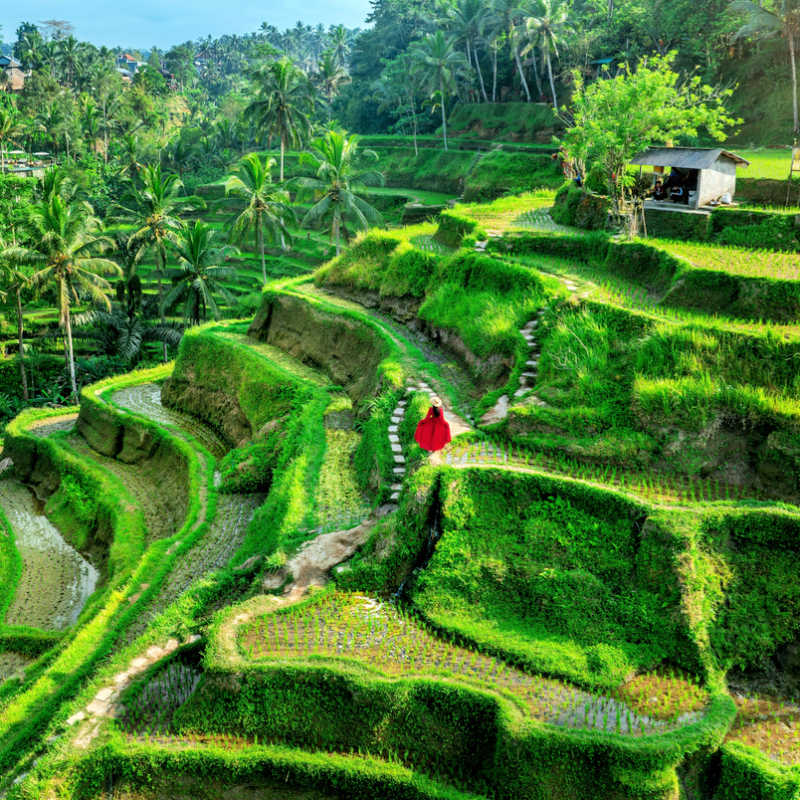
Whether you’re a foodie, an eco-warrior, a culture vulture, or a budding farmer, taking a day trip (or more) to Bali’s agricultural regions can offer a life-changing perspective on the world, and help you connect even more deeply to the island’s rich culinary heritage.
The undisputed king of Balinese agriculture is rice, a crop so integral to the island that its cultivation is a spiritual act, not merely a means of sustenance. The landscape is dominated by the breathtaking, terraced rice fields that cascade down volcanic slopes like giant, verdant staircases, a testament to the ingenuity and harmony of the local farming communities.
This agricultural marvel is managed by the subak, a democratic and egalitarian irrigation system that has been in use since at least the 9th century. Recognized as a UNESCO World Heritage Site, the subak is a living manifestation of the Balinese Hindu philosophy of Tri Hita Karana, which emphasizes the harmonious relationship between people, God, and nature.
This philosophy dictates that water, a sacred gift from the gods, must be distributed equitably and respectfully. The farmers in each subak collective manage the distribution of water from a central temple dedicated to Dewi Sri, the beloved goddess of rice and fertility.
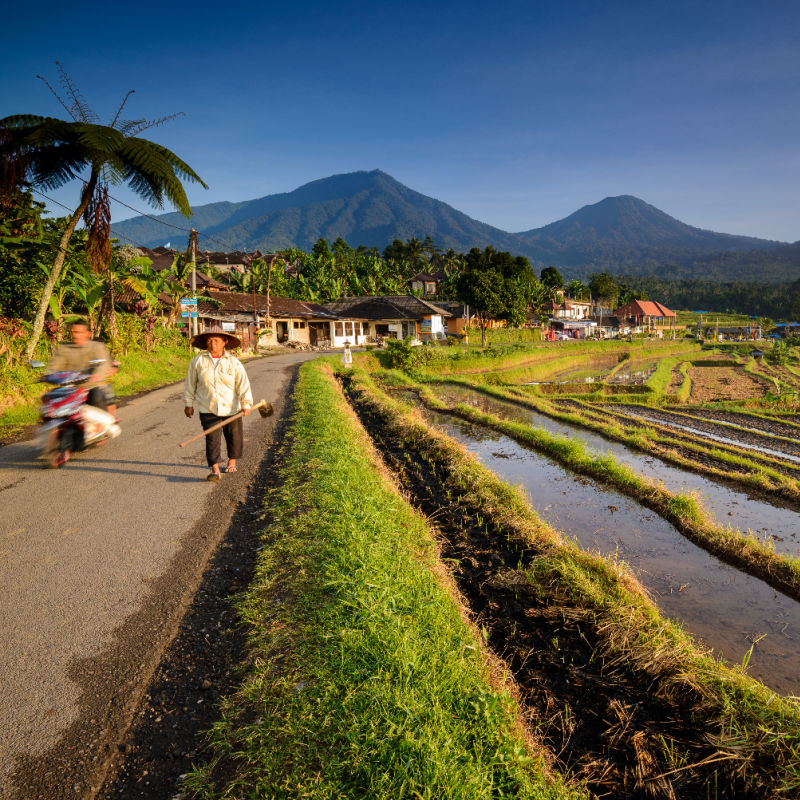
The cultivation process itself is a series of rituals and communal efforts. The first step involves preparing the flooded paddies, after which seedlings, carefully nurtured in a separate plot, are transplanted one by one by hand. The meticulous work of planting is often accompanied by blessings and offerings to Dewi Sri, a plea for a bountiful harvest.
Throughout the growing season, the farmers—under the guidance of a traditional leader known as the pekaseh—engage in various rituals to protect the crop and maintain the delicate balance of their ecosystem. The harvest is a communal celebration, often performed by women, who use small, special knives to cut the stalks as a sign of respect for the rice goddess. For the tourist, witnessing this intricate cycle is an extraordinary experience.
It reveals a society that works in profound concert with its environment, where the land and its bounty are treated with a deep reverence that has been preserved for over a millennium. There are opportunities in many villages to learn about this process, to get one’s hands dirty in a rice paddy, and to understand the sacred connection between the Balinese people and the food that nourishes them.
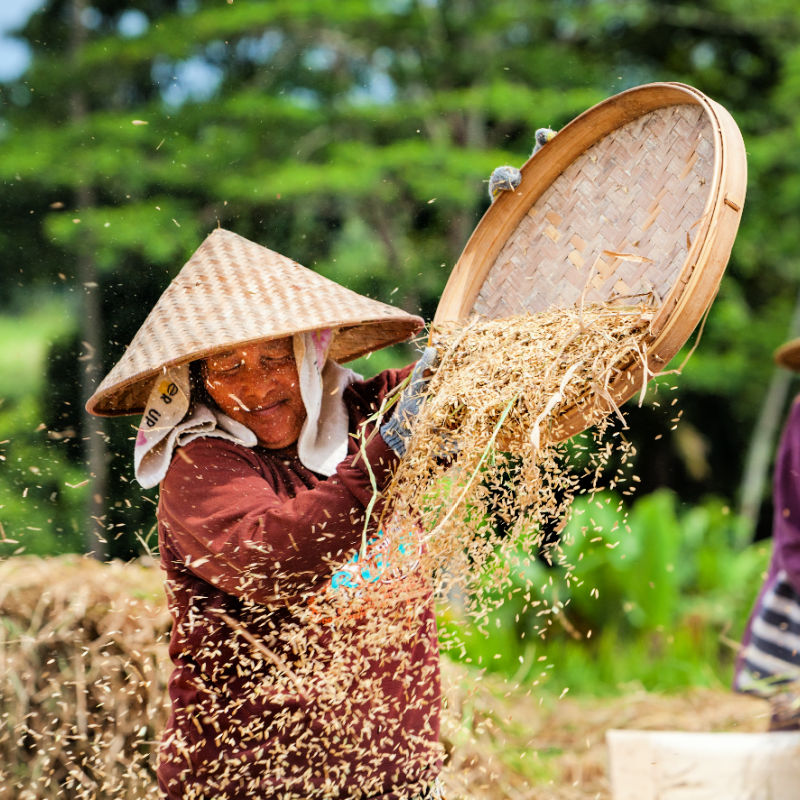
Beyond the rice terraces, the highlands of Bali yield another precious crop that has become a globally celebrated export: coffee. The Kintamani region, nestled between volcanoes at a high altitude, is the heartland of Balinese coffee production. The Arabica beans grown here are distinctively smooth, with low acidity and a fruity, citrusy flavor profile. This unique taste is not a coincidence; it is a direct result of the local farming practices.
Following a cooperative system known as Subak Abian, which also adheres to the principles of Tri Hita Karana, coffee farmers plant their trees alongside citrus plants like oranges. The proximity of these fruit trees infuses the coffee with its characteristic notes of lemon and orange, a natural and organic flavoring that is a testament to the symbiotic relationships within the ecosystem.
The farmers of the Subak Abian system also employ a unique wet-hulling process (Giling Basah) that contributes to the coffee’s full body and earthy, syrupy flavor. A visit to the Kintamani highlands offers tourists the chance to walk through these high-altitude plantations, learn about the intercropping techniques, and, of course, enjoy a fresh, fragrant cup of coffee with a view of the volcanic landscape.
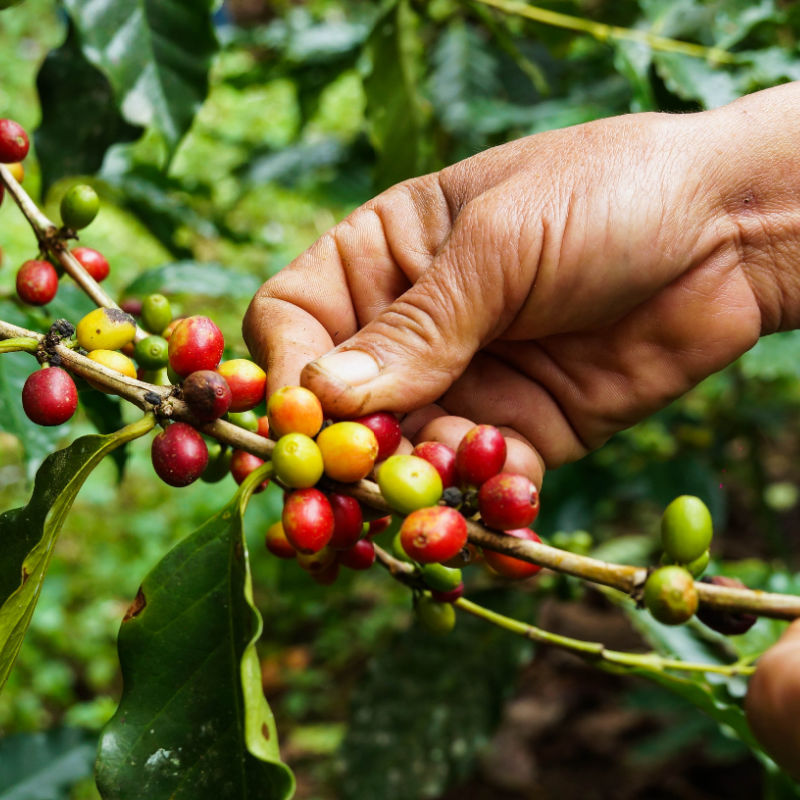
The fertile soils of Bali also give rise to a bounty of spices that form the very foundation of its cuisine and traditional medicine. Without these fragrant roots, seeds, and leaves, Balinese food would lose its distinctive soul.
The secret to the island’s celebrated flavor lies in Base Genep, a foundational spice paste that is a blend of up to fifteen different ingredients. This complex paste, used in almost every traditional dish, combines the earthy warmth of turmeric, galangal, and ginger with the pungent kick of shallots, garlic, and chilies, all balanced with the sweet, nutty notes of candlenuts, cloves, and nutmeg. These spices are not just for cooking; many have been used for centuries in usada, the Balinese system of traditional herbal medicine.
Turmeric is used for its anti-inflammatory properties, while ginger and galangal are prized for their warmth and digestive benefits. A deeper look into a local Balinese kitchen reveals a living pharmacy where every root and leaf has a purpose, both culinary and therapeutic. Tourists can participate in cooking classes that begin with a walk through a spice garden or a local market, offering a hands-on education in the ingredients that have shaped Balinese culture for generations. It is in these moments, smelling fresh lemongrass or grinding a spice paste from scratch, that a tourist truly understands the depth of the island’s flavour.

However, the future of this agricultural heritage is not without its challenges. The lure of the tourism industry has caused many young Balinese to abandon farming, and conventional agricultural practices are threatening the health of the very ecosystems that have sustained the island for centuries.
This is where the burgeoning movement of regenerative tourism enters the picture, offering a way for visitors to contribute to the solution rather than just witness the problem.
Regenerative tourism is a conscious effort to restore and revitalize the environment and communities, and in Bali, this movement is exemplified by initiatives that bring tourists into direct, meaningful contact with the land.
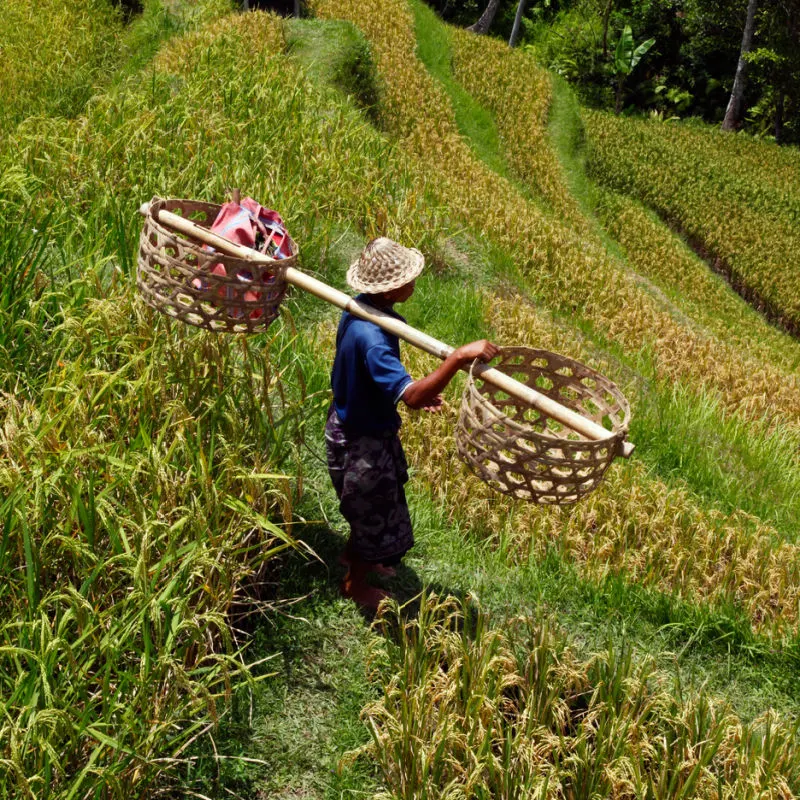
The Astungkara Way is a leading force in this movement, a pioneering project that merges regenerative farming with immersive travel experiences. The organization’s name, derived from the Balinese word for “hopefully” or “god-willing,” reflects its optimistic and purposeful mission.
At the heart of their offering is the Astungkara Trail, a series of multi-day treks that take tourists on a “pilgrimage” through the Balinese countryside. The most ambitious of these is the “Coast to Coast” trek, a 135-kilometer journey from the island’s south to its north. This is not a typical sightseeing hike; it is a transformative experience designed to slow down the traveller, to connect them with the earth, and to educate them on the urgent need for a new approach to farming.
The Bali Sun Premium Members get a discount code for all hikes and trails with Astungkara Way.
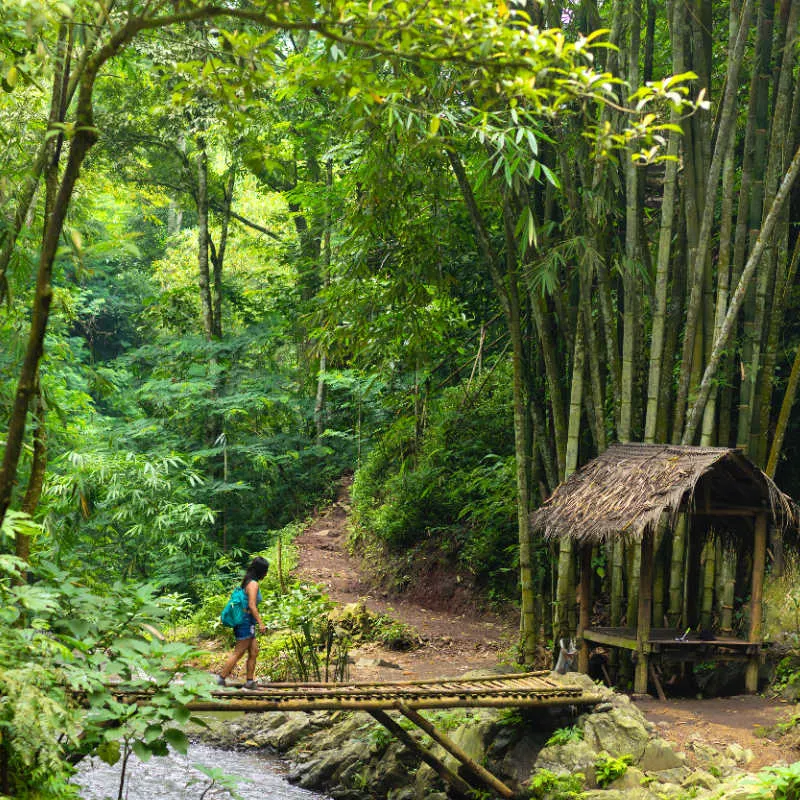
Along the trail, participants do not stay in hotels but in communal accommodations, sharing meals that are often harvested directly from the fields they are walking through. A typical day on the trek might involve a morning walk through stunning scenery, followed by an afternoon of learning from local farmers about their regenerative practices.
The core of The Astungkara Way’s work lies in its support for farmers transitioning from conventional monocropping to a method called Complex Rice Systems (CRS). This innovative approach integrates diverse plant and animal species, restoring soil health, and increasing both yield and biodiversity without the use of chemical fertilizers. The project has been instrumental in demonstrating that regenerative farming is not only more sustainable but also more economically viable for smallholder farmers.
Tourists on the trek learn about this method firsthand, understanding how their visit directly supports a movement that is bringing life back to the soil and hope back to farming communities. The organization’s goal is to create a working model of regeneration that can be replicated globally, and by participating, tourists become a part of this vital mission.
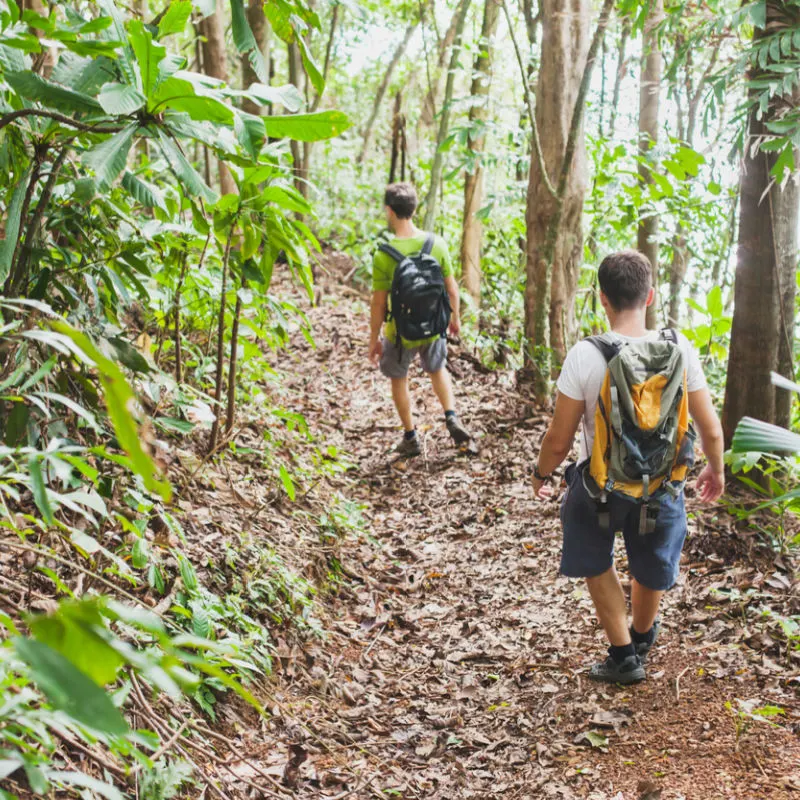
Other regenerative and ecotourism initiatives across Bali also offer unique ways for tourists to engage. Many resorts now offer hands-on workshops in organic rice cultivation, allowing guests to experience the ritual of planting and harvesting.
The growing number of farm-to-table cooking classes gives visitors the opportunity to forage for ingredients and learn the intricate art of Balinese cooking from local experts. These activities allow a tourist to move beyond being a passive observer and become an active participant in the preservation of Balinese culture and the restoration of its environment.
They provide a space to learn about the complexities of waste management, the importance of mangrove planting for coastal protection, or the delicate work of coral restoration projects.
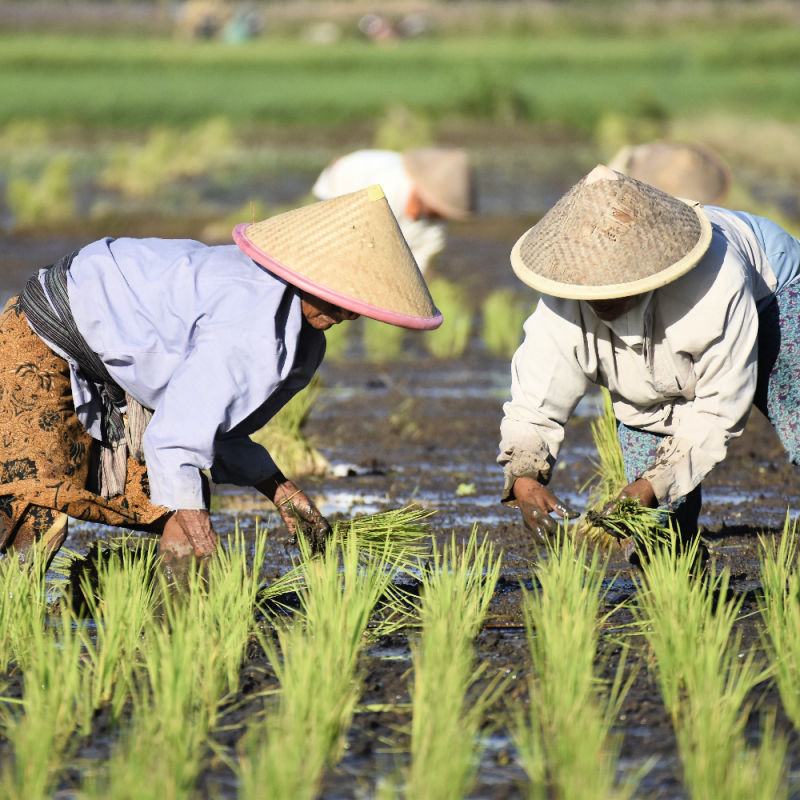
In a world where travel can often feel detached and fleeting, Bali’s rich agricultural and cultural landscape offers a powerful alternative.
The island’s fertile soils are not just for growing rice, coffee, and spices; they are for growing connections, fostering understanding, and cultivating a sense of shared responsibility. Through regenerative tourism, a vacation in Bali can become a journey of purpose, a chance to not only witness but also contribute to the enduring magic of this extraordinary island.
The flavors, the rituals, and the deep-seated respect for nature are all there, waiting for the curious and conscious traveler to discover them, one step and one taste at a time.

